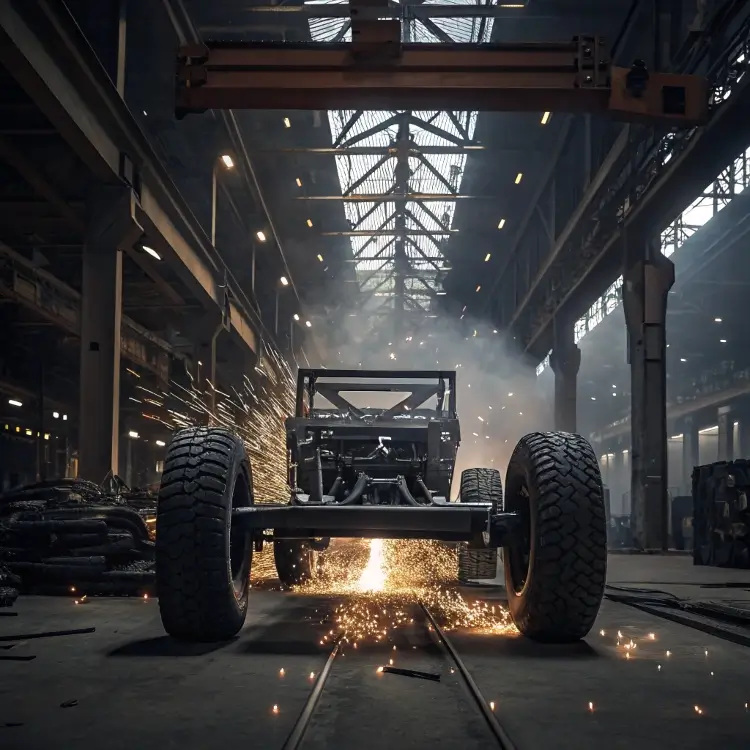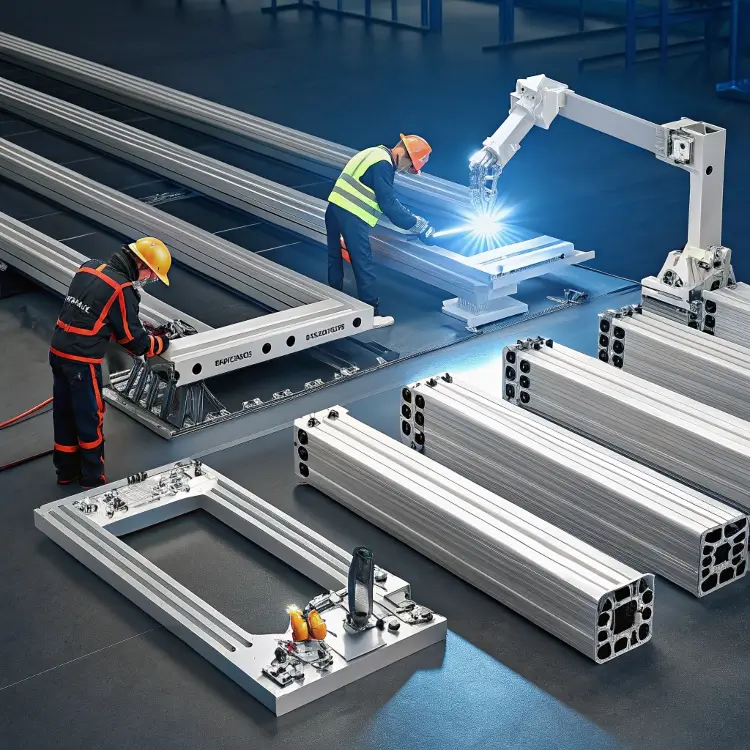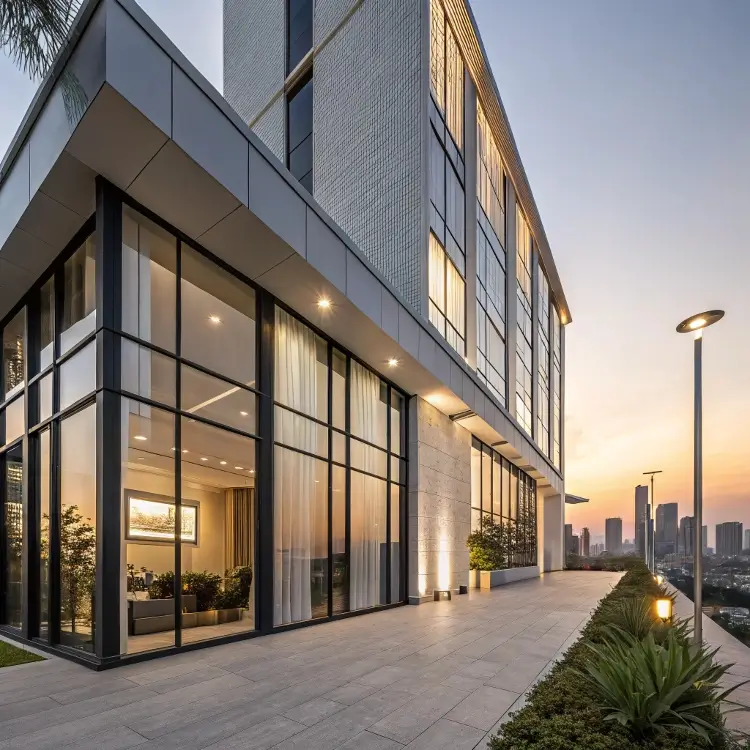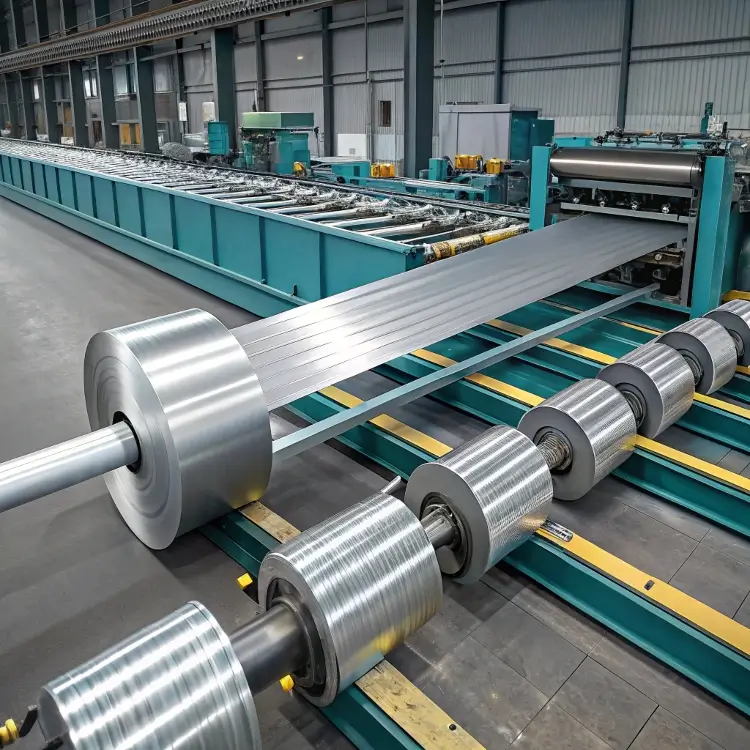What Are the Alternatives to Aluminum Profiles?

Aluminum profiles are everywhere—from construction frameworks to automotive parts. But what if aluminum is not an option?
Alternatives to aluminum profiles include steel, plastic, fiberglass, and wood—each with unique strengths and limitations depending on use cases.
If your project demands different characteristics like higher load-bearing, better corrosion resistance, or lower cost, exploring alternative materials could be the smartest move.
What Is the Alternative to Aluminum Profile?

Sometimes aluminum just doesn’t cut it—maybe it’s the cost, the weight, or its mechanical limits.
Materials like steel, PVC plastic, fiberglass1, and wood are all common alternatives to aluminum profiles, depending on the performance and application needs.
When I advise clients, I always start by asking: what’s the goal of the application? That helps narrow the right substitute. For example, steel profiles2 are ideal when structural strength is critical. They outperform aluminum in tensile strength and are better suited for heavy-duty applications like building supports or vehicle chassis.
Fiberglass is another common alternative. It’s lighter than steel and non-conductive, which makes it great for electrical or marine environments. However, it doesn’t have the flexibility in shape customization that aluminum extrusion allows.
Plastic, especially reinforced thermoplastics3 like PVC or ABS, is cheap and corrosion-resistant. I’ve seen it used successfully in shelving, framing, and lightweight enclosure applications. But be aware, plastic has low structural strength, and heat can deform it.
Wood is rarely used in industrial settings today, but in low-cost, short-term applications or decorative architectural uses, it still has a role.
Comparative Table of Common Alternatives
| Material | Strength | Weight | Corrosion Resistance | Cost | Machinability |
|---|---|---|---|---|---|
| Steel | Very High | High | Moderate | Moderate | Medium |
| Fiberglass | Moderate | Low | High | Moderate | Low |
| PVC | Low | Very Low | High | Low | Easy |
| Wood | Low-Moderate | Moderate | Low (without coating) | Very Low | Easy |
What Is Alternative Material for Aluminum?

If you’re choosing material for a frame or enclosure, you’re probably balancing between weight, cost, and strength.
Steel, plastic, magnesium, and even carbon fiber can be used as material alternatives to aluminum4 depending on engineering needs.
Steel is the go-to when you need toughness. It has high tensile strength and handles heavy loads well. The trade-off is its weight—steel can be up to three times heavier than aluminum. That’s a deal-breaker in transport-related industries.
Magnesium is interesting—lighter than aluminum, strong, and good at absorbing vibrations. I’ve worked with clients in the automotive sector who consider magnesium alloys5 when performance is critical. However, magnesium is expensive and more reactive.
Carbon fiber offers unmatched strength-to-weight ratio, and it looks premium. But it’s extremely expensive and hard to shape. Also, it’s brittle under compression.
So, it really comes down to this: What’s your budget? What’s your use environment? Do you need strength, lightness, corrosion resistance, or thermal properties? There’s no one-size-fits-all answer.
What Are the Different Types of Aluminium Profiles?

Even when sticking with aluminum, you have many types to choose from. It’s not just one single format.
Types of aluminum profiles6 include architectural, structural, industrial, and decorative profiles—each optimized for specific functions and strength.
At Sinoextrud, we group profiles by shape and use case. For example:
Common Profile Types
| Profile Type | Description | Typical Use Case |
|---|---|---|
| Solid Profiles | No internal voids, maximum strength | Load-bearing structures |
| Hollow Profiles | Tubular with internal voids | Lightweight frames, furniture |
| Semi-Hollow | Partially open designs | Heat sinks, complex assembly frames |
| T-slot/Industrial | Modular, easy to connect | Factory automation, workstations |
| Custom Extrusions | Tailored designs per project | OEM manufacturing, product development |
You can also pick from surface treatments: anodizing, powder coating, wood-grain finishes, etc. These improve aesthetics, wear resistance, and corrosion protection.
My team often helps clients compare profiles not only by shape, but also by tolerance class and load-bearing requirements. Sometimes a simple T-slot won’t cut it—you may need a heavier custom profile with CNC machining included.
What Are the Alternatives to Aluminum Extrusions?

Extrusion is popular because of its versatility, but it’s not the only process to create structural materials.
Roll forming, injection molding, die casting, and welding are alternatives to the aluminum extrusion process, depending on geometry and quantity needed.
Let’s break that down.
Roll forming uses steel or aluminum strips that are bent into shape progressively. It’s best for uniform cross-sections over long lengths. It’s cheaper than extrusion for high-volume production but less flexible in design.
Injection molding7 is ideal for plastics. I’ve seen it used for complex shapes with tight tolerances. However, the molds are expensive, so it only makes sense for high-volume runs.
Die casting8 is similar, but it works with metals like zinc, magnesium, or aluminum. It creates complex shapes quickly but sacrifices some mechanical strength compared to extrusion.
If your design is irregular or your volumes are low, welded assemblies from sheet or plate materials may be more cost-effective.
Summary of Manufacturing Alternatives
| Process | Best For | Cost Efficiency | Design Flexibility |
|---|---|---|---|
| Extrusion | Long, uniform profiles | High (med-high volume) | High |
| Roll Forming | Long steel shapes | High (large runs) | Low |
| Injection Molding | Complex plastic parts | High (very large volume) | High |
| Die Casting | Complex metal parts | Medium | Medium |
| Welding & Fabrication | Irregular, custom shapes | Low (for small runs) | High |
What Is the Best Aluminium Profile for a SIM Rig?
Building a SIM rig is a big DIY trend now, and aluminum profiles are the most common choice for good reason.
The 40x40mm and 40x80mm 8020-style aluminum T-slot profiles are the best options for building sturdy, adjustable SIM racing rigs.
Why do people love them? T-slot profiles let you connect pieces at different angles without welding or drilling. It’s like adult Lego. You can mount screens, pedals, seats, and even motion platforms.
I’ve had customers order full kits from us for SIM rigs—they often add custom machining like tapped holes and cut-to-length bars. These little tweaks make assembly faster and more rigid.
Also, consider profile wall thickness. Thin walls are cheaper but flex more. For a racing rig, especially with direct drive wheels, stiffness matters. Go with thicker walls and steel brackets if possible.
T-slot accessories—brackets, corner cubes, linear bearings—let you scale your rig over time. Start small, then upgrade.
Example Configuration
| Component | Recommended Profile Size | Notes |
|---|---|---|
| Base Frame | 40x80mm | High stiffness, supports weight |
| Pedal Tray | 40x40mm | Adjustable, good alignment |
| Wheel Mount | 40x80mm double reinforced | Resists flex during steering |
| Monitor Mount | 30x60mm or 40x40mm | Lighter load, adjustability |
Conclusion
From steel to fiberglass, and from roll-forming to die-casting, there are many alternatives to aluminum profiles. Choosing the right one depends on strength, weight, cost, and the application.
-
Discover how fiberglass can be a lightweight and non-conductive alternative to aluminum, perfect for specific environments. ↩
-
Explore the advantages of steel profiles, especially in structural applications, to understand why they might be the best choice for your project. ↩
-
Learn about reinforced thermoplastics like PVC and ABS, their cost-effectiveness, and applications in various industries. ↩
-
Explore this link to discover various materials that can effectively replace aluminum, considering factors like weight, cost, and strength. ↩
-
Learn about magnesium alloys and their advantages in automotive design, especially for performance-critical applications. ↩
-
Explore this link to understand the various types of aluminum profiles and their specific applications, enhancing your knowledge for better decision-making. ↩
-
Discover the benefits of injection molding, especially for complex shapes, and how it stacks up against aluminum extrusion. ↩
-
Learn about die casting and its unique benefits, particularly for creating complex metal shapes quickly and efficiently. ↩



